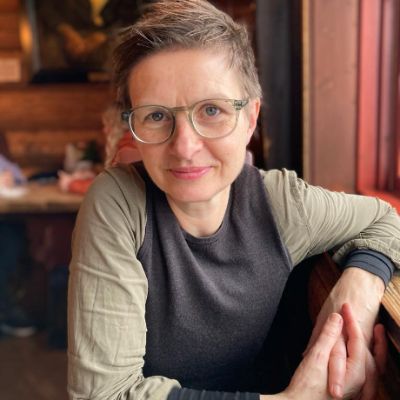The work of an Austrian Wunderkind to whom nobody had yet said “no” – not least his father, who co-wrote the libretto – Die tote Stadt played all over Germany in the 1920s, a nation recovering from both the shame and horror of the Great War and from a global flu pandemic that killed an estimated 50 million worldwide. No wonder there was such an appetite, if that’s the word, for the living dead. There was more to come, of course, and following a ban on his opera, the Jewish Korngold accepted an invitation he couldn’t refuse to Hollywood, where his swashbuckling, money-no-object orchestrations became the music of the movies.
Until recently I’d have said it was a rare treat to hear this work live, in its entirety, but its centenary has seen a cluster of productions, some performances of which had to be cancelled in accordance with Covid restrictions. Like the opera’s hero, Paul, we’re still struggling to return to the land of the living.
But treat it most certainly is to gather the mighty forces for a new production of this work at Deutsche Oper am Rhein, where its Wagnerian volume is coupled with the expansive melodic lines reminiscent of Puccini. There’s scarcely a bar’s rest between the massed brass, panoply of percussion (don’t forget the bells) and the frequently divisi strings, creating those rich complex textures that are the composer’s trademark. The young Korngold must have heard Strauss and thought “Mine will go up to eleven.” There are four (count them) double basses in the Düsseldorf pit and they are having a party. I haven't seen it but I’m guessing that the general marking at the top of conductor Axel Kober’s score translates as “Let rip!”.
The libretto is a very different challenge. Paul is grieving for his dead wife Marie and becomes convinced that Marietta, a dancer on tour in Bruges (someone’s got to do it) is Marie, returned. Marietta plays along for a bit but gets the hump because Paul won’t pay her as much attention as he does the dead woman. She’s got a point. Korngold senior was no great shakes at characterisation or plot, and (the worst) it all turns out to have been a dream.
It's a brave director indeed who would take this on, and a particularly imaginative one who could find the psychological complexity in Paul’s situation and make him someone the audience cares to spend the evening with. American Wagnerian Corby Welch had some belting vocal power and pinned your ears to the back wall of the balcony, but he had little to do but pound up and down in what looks like the props workshop for Carry On Screaming. When this opera first did the rounds, avant-garde film was already exploring Freudian Doppelgängers, ghouls and zombies with groundbreaking cinematic techniques, and yet a century later we’re looking at a shop dummy in a negligée.
And here we must consider what’s in it for Marietta. Nadja Stefanoff soared magnificently over Korngold’s musical mountain ranges and was a compelling presence on stage, but dramatically she’d been sold short. What real woman would spend time with a man who spends all his time with a mannequin unless it was for professional or profoundly sinister reasons? It may seem odd to bring up realism just now, but even though Marietta’s feelings and motivations aren’t much in the libretto, they certainly ought to be in the dramaturgy. Playing second fiddle to a dress-up doll looks and must feel ridiculous in front of an audience. Meanwhile, as Marie, the knock-out Mara Guseynova appeared from behind a shower curtain like Marion Crane come back from Psycho and was left drooping about the stage in an outfit from the Addams Family wardrobe. Anna Harvey’s full-blooded Brigitta was right about the nunnery.
There was an opportunity here for a director to show something we’ve not already seen about men, women and the agonies and consolations of grief. By presenting a production with all its uncanniness and horror in inverted commas, Daniel Kramer has missed it.
Aside from the old, borrowed and blue (that negligée) there was something new at this premiere: AR, or “augmented reality”, a pilot project developed by Deutsche Oper am Rhein together with Vodafone*. By way of an app and some digital opera glasses you can read explanatory content at the same time as you’re watching the stage, which feels distracting, or read the supertitles in English or German without having to glance up at the proscenium arch, which feels more natural. For now, it’s all a bit of a faff and delivers far less than augmented reality specs for an opera about augmented reality promises. Obviously there is potential here, but no creative team anywhere should be waiting on technology to do their job for them.
* This review was amended to factually correct information about the AR project, which is not part of the company's Digital Foyer initiative




